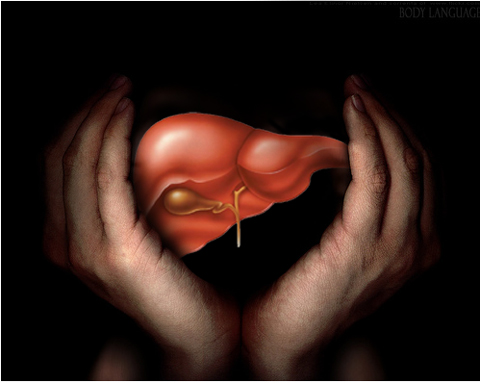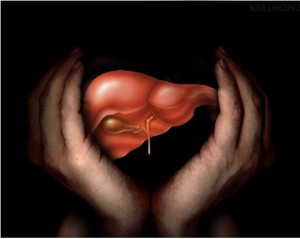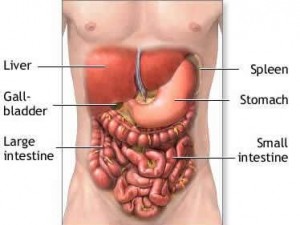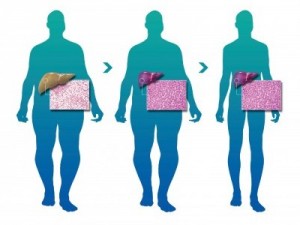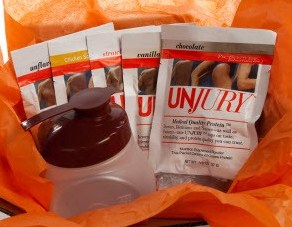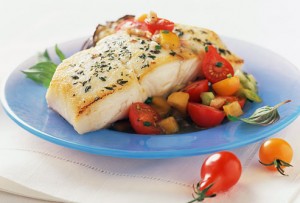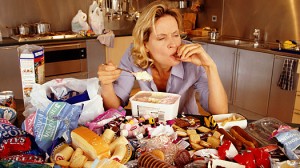Congratulations on your decision to improve your health with the help of the Lap-Band. Going forward you will be expected to make many changes in your diet, approach to eating, and lifestyle in order to aid the Lap-Band to work properly to produce weight loss. Your first challenge will start with a Pre-Surgical Diet (LSD) to reduce surgical risk, followed by a Post-Op Recovery Diet, and finally a reduced calorie balanced diet to aid in weight loss.
The liver can become enlarged and contains abnormally large deposits of fat when a person is very obese. Due to its location in the body, it is in the way of the surgical area, and can cause problems for laparoscopic placement of the Lap-Band. This enlarged liver must be held out of the way by surgical instruments. An enlarged liver is more fragile than normal and will bleed easily when touched or manipulated. When the liver bleeds, it can be difficult to control and increases surgical risk. Extra care is required when the liver is enlarged, which can increase the time a patient spends under anesthesia, and prolong recovery. For the safety of the patient, if the liver is considered too large or fragile, Dr. Kuri may need to postpone or cancel the surgery until it is determined there is a reduced risk to proceed with the operation.
The Purpose of the Liver Shrinking Diet is to:
*Reduce body fat around the stomach and liver, as well as shrink the liver itself;
*Reduce surgical risk by reducing fatty triglycerides from around the liver and spleen, reduce potential surgical bleeding, and improve recovery time;
*Increase protein intake – will preserve muscle tissue and aid in recovery.
Why Do I Need to go on the Pre-Op Liver Shrinking Diet?
Patients with a Body mass index (BMI) of 45 or greater, or are at special risk due to a previous health condition, are prescribed a special diet 7 to 14 days prior to their scheduled surgery. A special diet (LSD) followed for a length of time prior to surgery, has been very effective in shrinking and firming the liver. This diet reduces the risk of potential bleeding and complications during your surgery. If you have been prescribed this special diet, it is important that you follow the instructions for the diet to improve your surgical outcome.
Please Note: This diet is not recommended to all patients undergoing Lap-Band surgery, and should only be followed if prescribed to you personally by Dr. Kuri or his staff. Although patients report losing a significant amount of weight during both the Pre-Surgery Diet and Post-Op Diet, these diets are not for the purpose of weight loss and should not continue to be followed after the prescribed time frame (unless you are asked to do so by Dr. Kuri).
It is important that you mentally prepare yourself for the challenges ahead. ( see also Getting Through the First Week of the Liver Shrinking Diet) Both the Pre-Surgical Diet (LSD) and the Post-Op Recovery Diet will be a drastic change from your previous eating habits, and will require your diligence and commitment for the diets to reach their desired effect. Although you may be tempted to splurge on all your favorite foods, this is not the time to let your health worsen.
Liver Shrinking Diet Particulars
Generally the LSD is high in protein, and low in calories and carbohydrates.
The average calorie range is between 1,200 to 1,600 calories per day;
The typical protein intake is between 70 to 120 grams a day;
The recommended carbohydrate intake is between 40 to 50 grams a day.
Which Foods are High In Carbohydrates?
The foods highest in carbs are high in starch or sugar. This includes anything made with flour or sugar, grains, foods with added sugar, and starchy vegetables such as potatoes and corn. Most processed foods are high in carbohydrates.
You will have a choice in how you would like to do your liver shrinking diet.
Plan A – Use protein supplements, such as protein powders, shakes, puddings and have one low carb meal a day.
Plan B – Choose regular foods that are low in carbohydrates and higher in protein.
Advantages and Disadvantages
Plan A – Results in a greater overall weight loss and is very effective at shrinking the liver. Plan A does not require as much cooking, and may be preferred by busier individuals. However this plan is the most challenging and harder to stick to. Plan A limits the patient to one solid meal a day, and uses protein supplements for additional meals. Patients also tend to have stronger cravings for carbohydrate based foods. Patients on Plan A also report being more fatigued, and have a harder time concentrating within the first five days. Plan A requires you to purchase special low carb, high protein supplements.
Plan B – Results in moderate weight loss and is effective in shrinking the liver for surgery. This plan is easier to stick to and has more balanced nutrition and provides adequate fiber. Patients experience less withdrawal symptoms and problems with focus and fatigue. Plan B requires more meal planning, shopping and cooking.
Not Sure which Plan to Follow?
Try alternating days. One day Plan A followed by one day on Plan B. Or if you are prescribed the LSD for two weeks you can start the first week with Plan B to lean you off carbohydrates the first week. Then switch to Plan A for the last push before surgery. Both plans will have sample menus to follow or you can use your own.
PLAN A – Using Liquid Protein Supplements
Plan A consists of protein drinks for two meals and a protein bar or protein pudding for a snack and one solid meal per day.
Carb count for your protein drinks, including what you mix it with and protein bars and pudding should be limited to a total of 40 carbs (net carbs). Limit your one solid meal to 10 carbs, for a total of 50 net carbohydrates per day.
Liquid Protein and Protein Bars
To ensure adequate protein intake you may want to supplement your diet using a powder/liquid protein drinks. There are many on the market, you can find them at nutrition/health and vitamin stores, as well as GNC, Trader Joes, and Fresh & Easy and some local markets. Some taste good and some are downright disgusting. We suggest you sample one before you invest in a large quantity.
Many patients have reported that the brand UNJURY was among the best tasting and least expensive. It is available only online but ships very quickly. Flavors include; chocolate, strawberry sorbet, vanilla, unflavored and chicken soup.
You can choose when you would like to have your solid meal during the day (breakfast, lunch or dinner)
Your solid meal should consist of 5 to 6 ounces of lean protein and one cup of vegetables, two cups if you are using salad . You may use a small amount of butter or oil to use for cooking or flavoring your food (up to 2 tbs.).
Sample Menu
Breakfast
Protein drink (select 15 to 20 net carbs per serving)
Lunch
Protein drink/pudding 15 to 20 net carbs
Snack
2 tbs. almonds
Dinner
5 ounce chicken breast with parmesan cheese, 1 cup mixed sautéed vegetables in olive oil and garlic.
Remember to drink 80 to 100 ounces of non- carb containing fluids daily.
Plan B – Your Diet Choices will be Very Limited to Low Carbohydrate Foods.
With plan B you can eat more regular foods, but your total carbohydrates should not exceed 50 net carbs. Read labels very carefully look for hidden sugars.
Examples of low carbohydrate foods are:
Proteins such as meat and eggs
Most vegetables (low carbohydrate)
Low sugar fruits
Soy beans
Some dairy products.
Note: See Sample Low Carb Menus and recipes (1-7 )for plan B at the bottom (Tips and Resources)
Start a Journal
In order to stay within the diet parameters, you will need to keep track of your food intake. We suggest you start a food journal – This can be as simple as a spiral note pad. You just need to be able to track your carbohydrate, fiber, protein and calorie intake. Although the LSD is not part of your weight loss phase, we recommend that you don’t go over 1,600 calories. This will help to keep you well within the diet limits for carbs and protein intake.
You may have your choice of the following:
Protein (3 to 6 ounces per serving) Meat, poultry, pork
*Steak, Hamburger patty, lean, Chicken/turkey breast or thigh, pork lean cuts (pork tenderloin, ham)
*Fish/seafood- Salmon, halibut, crab, shrimp, tuna, trout, tilapia, bass, perch, etc. No breading, no fish sticks, no batter – plain only, please
*Eggs – soft boiled, hard boiled, scrambled, poached
Vegetables -You can have ½ cup of low carb vegetables or 2 cups salad greens with each meal.
Fruit -Fruit is high in carbs and can be eaten in limited amounts ½ cup total daily, if you have carbs left in your total.
Milk and Cheese -½ cup cheese, any kind, but only one serving of cheese per day.
You may use low-fat or reduced fat milk or sugar-free soy milk to mix protein drinks (read labels milk is high in carbs)
Condiments and Oils and Fats – You may add up to 2 Tbsp. total daily of the following fats/oils:
*Regular salad dressing, (The regular actually has fewer carbs than the fat-free or low cal)
*You may have 1 Tbsp. any kind tartar sauce but no ketchup or BBQ sauce
*You may use 1 Tbsp. light mayo or light Miracle Whip
*You may use butter, margarine, olive oil, or cooking spray if you wish
*You may use any spice as long as it is sugar/carb free: salt, lemon juice, dill, pepper, or onion powder, garlic salt, etc.
The best choices for fat in your diet are called mono-unsaturated fats and omega-3 fatty acid. Examples of good fats include olive and canola oils, oily fish, walnuts, almonds, peanut butter, avocado, and olives. An extra benefit is that these foods taste good.
Foods you cannot Eat During the LSD Include:
High sugar foods (candy, baked goods, high sugar cereal)
High carbohydrate foods (including bread and pasta, rice, crackers)
Fatty meats, Fried foods, Whole milk products (regular cheese, regular yogurt and ice cream included), High calorie beverages (including regular soda, coffee drinks, sweet tea and alcoholic beverages)
Watch out for things that you would normally not consider food! Chewing gum (no-cal gum is fine), breath mints, cough syrup, hard candy, and cough drops nearly all have sugar.
Tips and Resources
Low Carb Menu #1 – Liver Shrinking Diet Plan B
Low Carb Menu #2 – Liver Shrinking Diet Plan B
Low Carb Menu #3 – Liver Shrinking Diet Plan B
Low Carb Menu #4 – Liver Shrinking Diet Plan B
Low Carb Menu #5 – Liver Shrinking Diet Plan B
Low Carb Menu #6 – Liver Shrinking Diet Plan B
Low Carb Menu #7 – Liver Shrinking Diet Plan B
Quick and Easy Low-Carb Snacks for Liver Shrinking Diet

